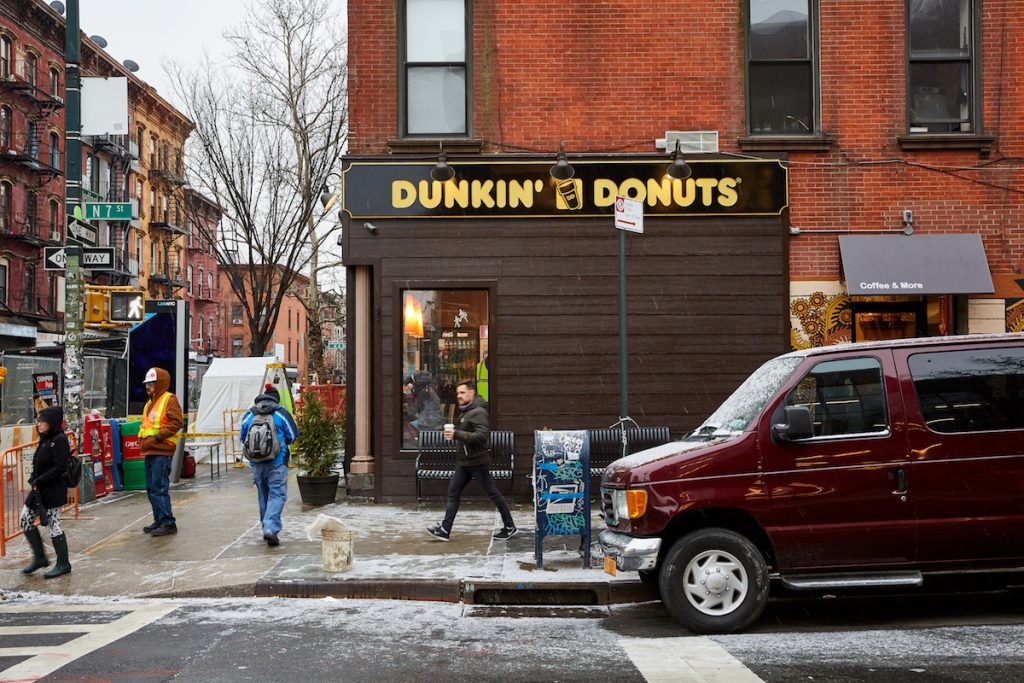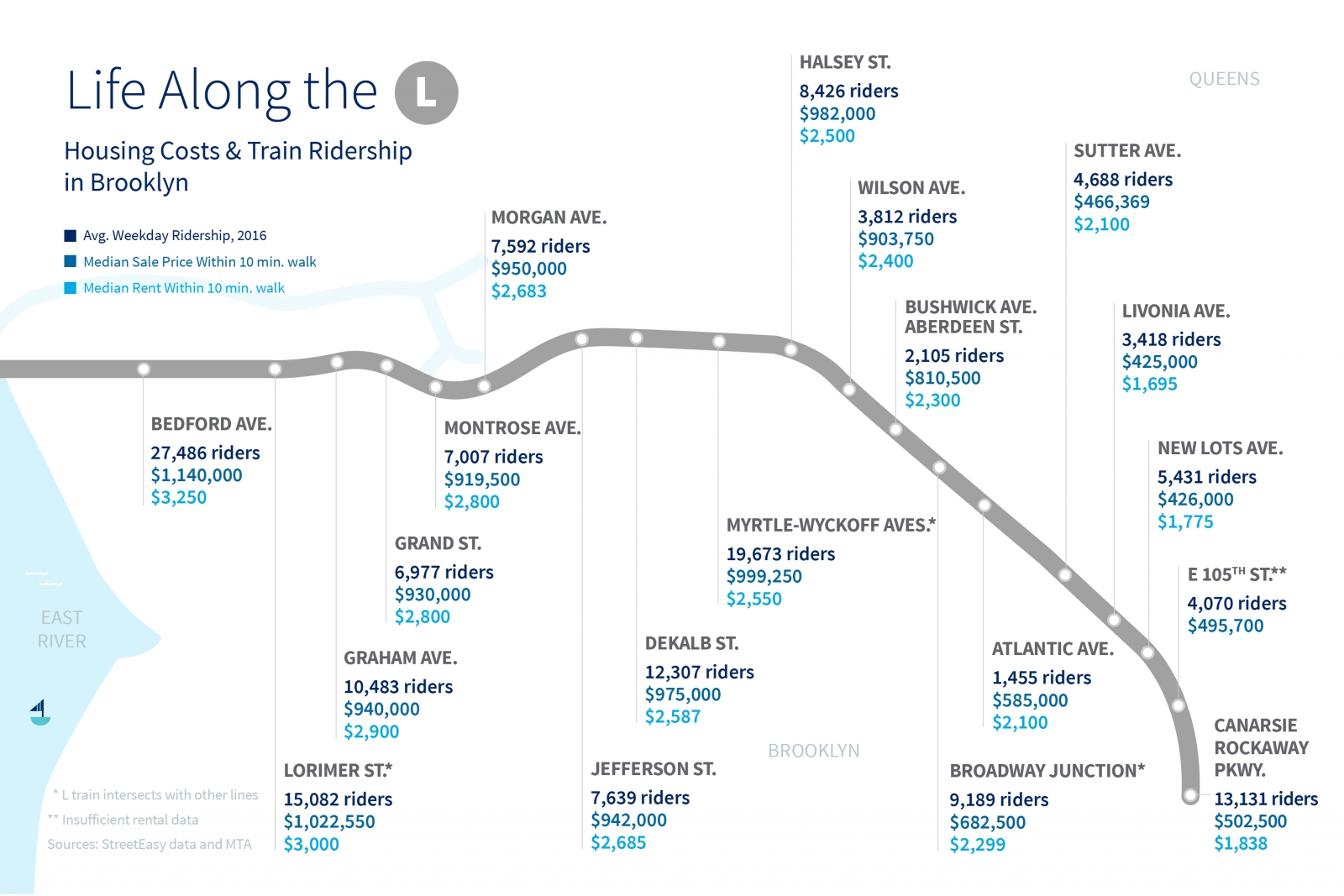The L Train Shutdown

All this week, StreetEasy is covering the L train shutdown planned for April 2019, reporting on its impact on the housing market and how those affected plan to respond. Our coverage is running now to help readers make housing decisions well in advance of the shutdown. See all our L train shutdown coverage.
The shutdown of the L train promises to be an extensively covered event in coming year, as Williamsburg and its environs — some of the more prosperous (or at least expensive) parts of Brooklyn — lose their easy connection to Manhattan. So what will come of the April 2019 shutdown? Our analysis shows some bumps in sales prices since the shutdown announcement, but neighborhood homeowners will be inclined to sit tight. Renters who love Williamsburg ‘s diversity of restaurants, shops and nightlife will likewise be tempted to endure the inconvenience.
Yet the effects of the L train shutdown could far outlast its planned 15-month duration. The rise of Williamsburg’s affluence has coincided with a boom in the area’s retail, residential, and hotel businesses, which attract enormous volumes of foot traffic. Ever weekend, local revelers and tourists pour out of the Bedford Avenue L stop, eager for a night on the town. Cultural institutions for which Williamsburg has become known — such as Smorgasburg, Music Hall of Williamsburg, and Brooklyn Bowl — are dependent on visitors from other boroughs, cities, and continents purchasing $15 kebabs and tickets to Drake tribute shows. While some neighborhood die-hards might welcome fewer visitors, business owners dependent on a steady stream of pedestrians are highly unlikely to take such a sanguine view.
These retail institutions — from small stores like Concrete and Water and Spoonbill & Sugartown to global brand outposts such as Levis and Apple – are likely to be hardest hit by the L shutdown. Commercial leases tend to last far longer than residential leases, with retail landlords heavily incentivized to hold out for the highest rates possible in areas surrounded by such a high density of affluent residents. Yet not all businesses have the resources to cope with a precipitous fall in foot traffic. Smaller, locally owned shops, bars, and restaurants are far less likely to have the deep pockets needed to survive a decline in visitors, while chains — Whole Foods, Equinox, Duane Reade and Dunkin Donuts — will probably be fine.
Over the past decade and more, Williamsburg has become a popular destination among Manhattanites for a night out. The neighborhood institutions featured in “Girls” and “Master of None” shape their offbeat aesthetic around local residents, but often depend on visitors for the marginal revenue they need to remain in business. The shutdown will undoubtedly sting: The owner of Fornino says the neighborhood pizza joint saw a 40 percent fall in visitors over weekends when prior track work shut down the L. Some argue that the closure will be an opportunity for locals to spend more in their own community, though it’s hard to imagine locals spending with the same abandon as those visiting for an evening. With weekend traffic congestion on the Williamsburg Bridge already an issue, it’s far from clear that those traveling in from elsewhere will be willing to endure the headaches resulting from the tunnel’s closure.
Weekend travel is conspicuously absent from the shutdown mitigation plan compiled by the city, which rightly focuses on minimizing the impact on weekday commuters to other parts of the city. The number of transfers required to reach North Brooklyn by subway without the L will be particularly burdensome on nights and weekends, when service is less frequent and other tracks face their own construction delays. The MTA has proposed running ferry service until 2 a.m. on weekends to accommodate the night owls and revelers, and such a trip will undoubtedly appeal to partiers. Residents who live in the high-priced waterfront buildings near the ferry terminals, however, will probably take a different view — especially after learning of the late-night horn blasts required each time a boat heads off toward Manhattan. A fight over this aspect of the MTA’s mitigation plan is likely. Local officials will have a tough time pleasing all, and the concerns of small business owners in the community will have to compete against those of other stakeholders.
Surviving as a small business owner in an era of rising property values is difficult. The proprietors of Williamsburg’s neighborhood haunts are no exception, as the closures of Beacon’s Closet and the Manhattan Inn remind us. The L train shutdown is likely to amplify these pains, leaving a changed neighborhood in its wake when the Canarsie tube reopens. While residents of Williamsburg will certainly face headaches during the L train closure, the greater impact will likely be on local business owners, who may find it increasingly difficult to compete against the national brands capitalizing on their neighborhood’s reputation. The L shutdown is temporary, but the resulting shifts in Williamsburg may be permanent.
>> See more of StreetEasy’s L train shutdown coverage.
—
Hey, why not like StreetEasy on Facebook and follow @streeteasy on Instagram?









